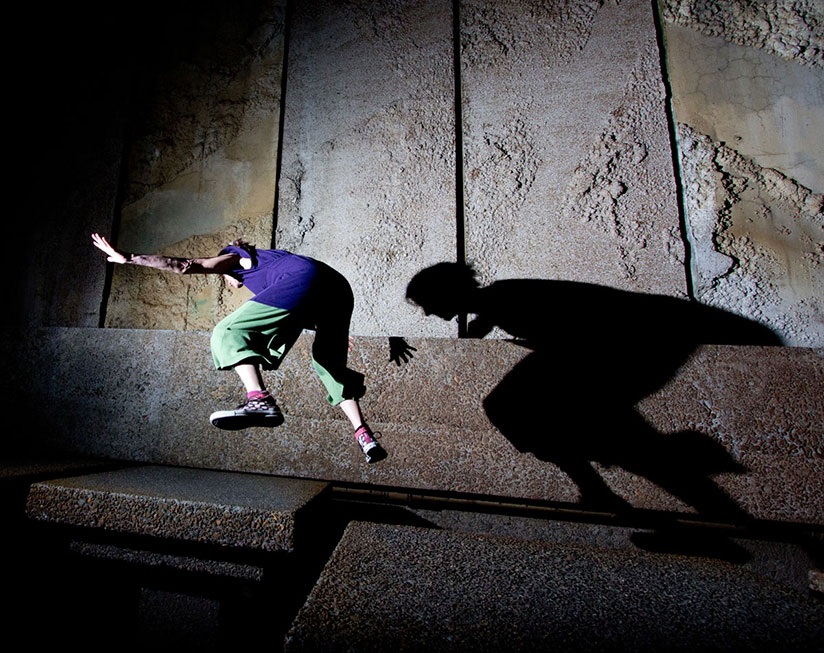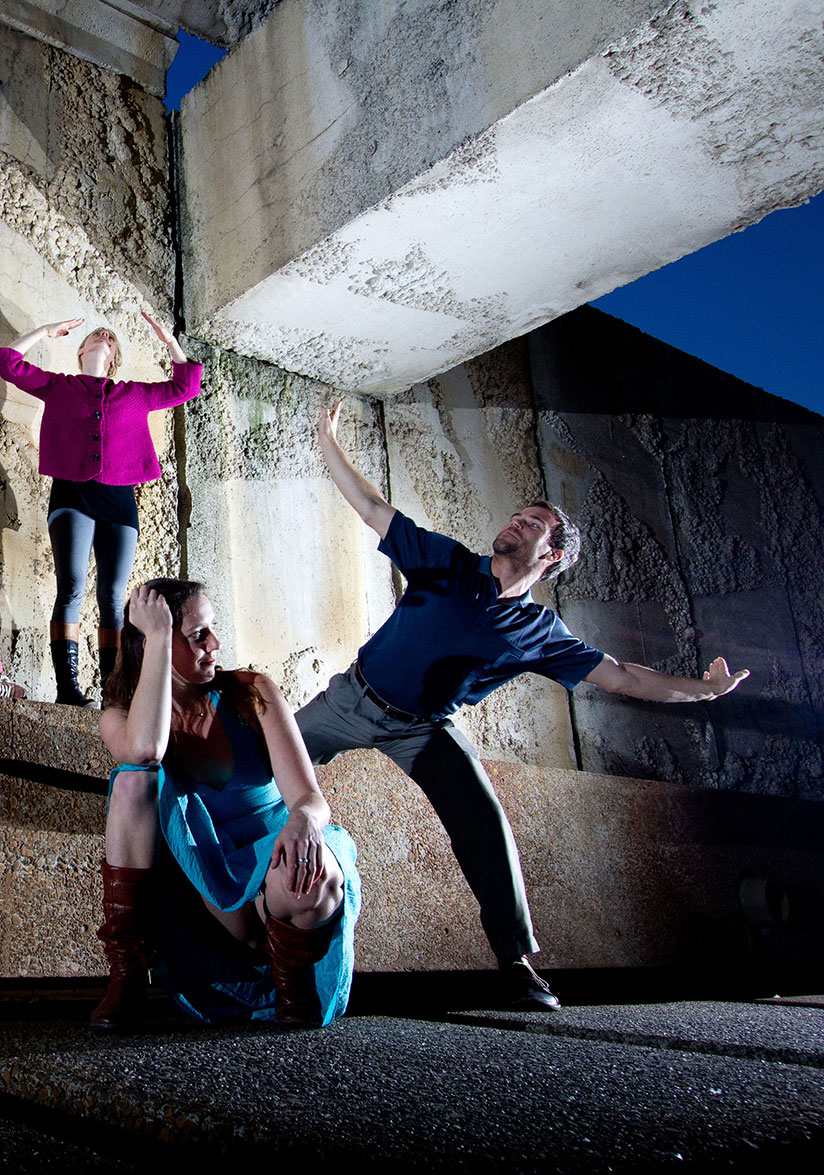“It’s not just what’s put in a gallery or what’s put on stage,” Fein says. “ But the practice of creating the art and making it valid within itself. It’s really intriguing. If you look at dance and other performance, often what happens in rehearsals can be just amazing and may not be what you get to see on stage.”
On March 30th 2012, at exactly noon in San Francisco, 3 p.m. in New York City and 9 p.m. in Paris and Rome, people around the world will spontaneously begin to dance. Not because of some widespread, modern re-occurrence of choreomania, but because of a concerted effort by dance anywhere®, which organizes a worldwide public art performance encouraging people to dance on street corners, in elevators, in parks … anywhere.
The underlying idea: to free ideas of performance and dance from the constraints of the stage, recontextualizing public space as a potential venue for art and interaction within a community.
Artist and dancer Beth Fein first created dance anywhere® in 2005 in an effort to blur the line that precludes us from incorporating dance in our everyday lives. The first dance anywhere® event in the Oakland and Berkeley area featured a street performance by dancers positioned on every corner for about ten blocks. As she observed the unwitting audience members lighting up and joining in on the unexpected performance, Fein recognized the potential for dance in street performances around the world.
Art in Odd Places interviewed founder Beth Fein to learn more about this novel take on dance and the upcoming performance on the 30th.
AiOP: What can people expect on the 30th?
Beth Fein: I would like to think that everyone, everywhere will all simultaneously stop and dance – even if just for a moment – no matter where they are: in a car, seated in a meeting, out on the street, in a class, a bank, at work…what would happen if we all had this moment of movement whether small and quiet or large and energetic together? You can also choose to be the audience and go to see one of these performances or join in with the more informal dances.
If you check the website you will see where to find performances, including where professionals and aspiring dancers will be dancing. If you can’t find one to attend, then you have the option of creating your own.
AiOP: Why do you ask people to send in videos and photos?
Beth Fein: dance anywhere® is a conceptual, participatory public art project – it is just an idea. Sharing photos and videos is a way to share the experience with their unknown fellow dancers. It creates community and inspires other dance, art and community experiences. I really look forward to seeing the photos and video – to see who danced and all the different dances that people create.
“ I think there is often a line between where “art” occurs, ” Fein says. “This is a more direct public art, where you’re reclaiming public space.”
AiOP: How can people connect with dance anywhere if they live overseas (leading up to the 30th and beyond)?
Beth Fein: No matter where you live, you can be a part of dance anywhere®. The first step is to create a profile of yourself on the dance anywhere® website. You can say as much or as little about yourself as you are comfortable with. After dance anywhere®, we have instructions how to upload your media so that it appears on your profile. From these entries (they can also include, animation, drawings, paintings, poems or observations) we curate an online gallery.
dance anywhere® has also started a blog and we are interviewing participants about their dance anywhere® experience, how that informs their artwork, creativity and what they are doing the rest of the year.
You can also find dance anywhere®’s page on Facebook as well as an event and a group. These are places for everyone to talk about dance anywhere®, post photos, videos, ideas, and art that they are doing through out the year.
AIOP: With dance, although it’s fun to do, people often feel very shy about it because it is such a social thing. How does dance anywhere encourage dance in a public space while rejecting judgment?
Beth Fein: dance anywhere® is public art that reclaims public space by having dance occur in spaces that belong to everyone, but it is also public art because the concept is that dance anywhere®, as a performance belongs to all who take part in it. That means that you can dance on the subway or in your kitchen or living room. You can get up and move your whole body, or dance in your chair. You could even quietly have your fingers dance on your desk or the arms of your chair. The definition of dance is wide open.
AIOP: How does dance anywhere® seek to challenge preconceived ideas about dance?
Beth Fein: dance anywhere® challenges the idea of dance as an art that necessitates a stage in a theater. Dance practice, as well as art practice is a continuum that encompasses daily work in the studio and class (dancers are always training) and rehearsal. There is so much intriguing and beautiful dance that happens away from the stage that dance anywhere® is an acknowledgement of this art practice as art. It is not so much whether dance is a fine art but rather that the process of creating dance (seen or not) is an integral part of the art of dance. This is also true for art in other media.
In the past, dance anywhere performances have encompassed six continents, over 30 countries, more than 315 cities and thousands of dancers.
AIOP: What’s in the future for dance anywhere?
Beth Fein: The future of dance anywhere® hopefully includes greater diversity of people, location and styles of dance.
We hope that dance anywhere® goes to school can partner with more schools and artists in the schools to promote learning through movement, and inspire both writing and artwork through the dance anywhere® experience.




